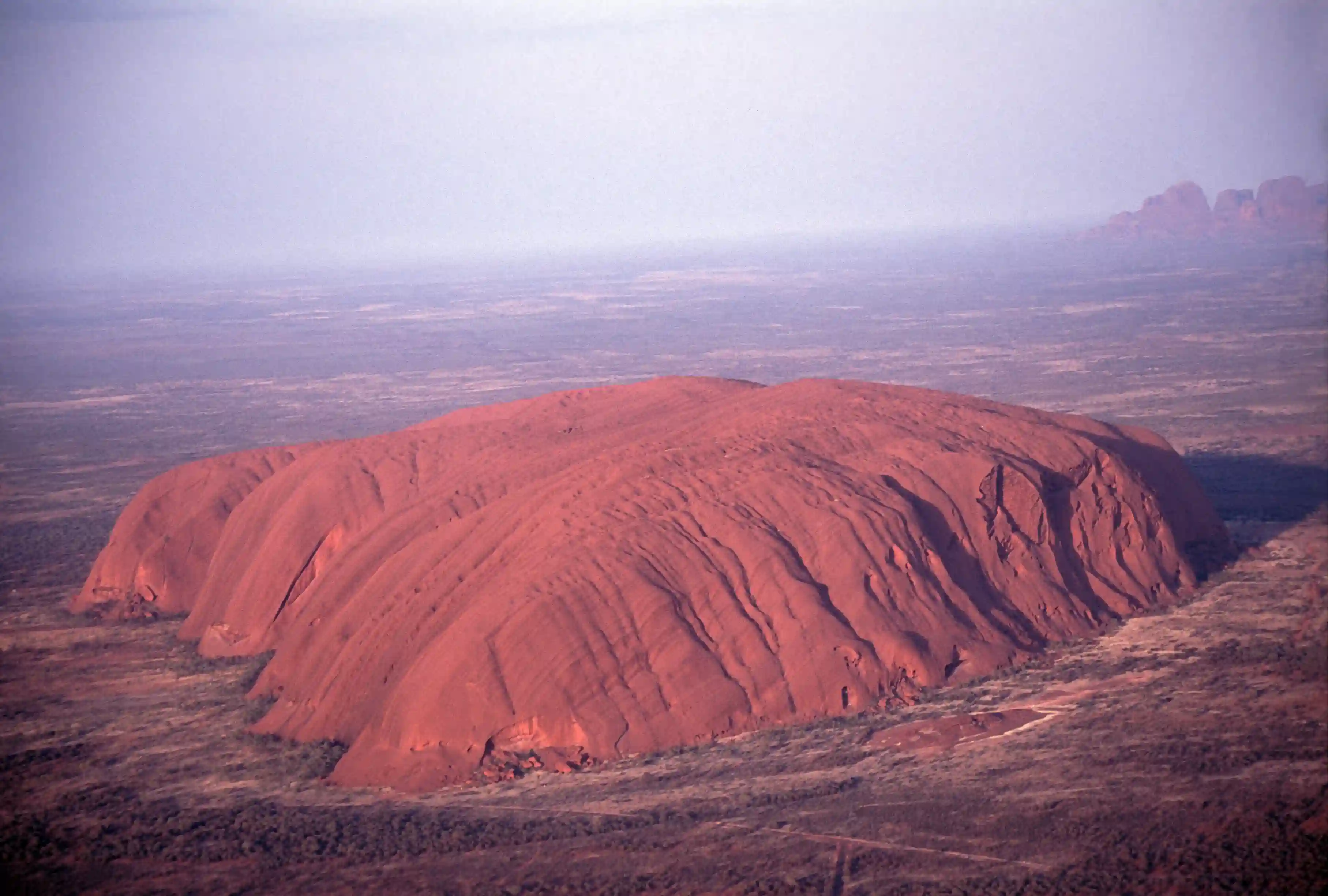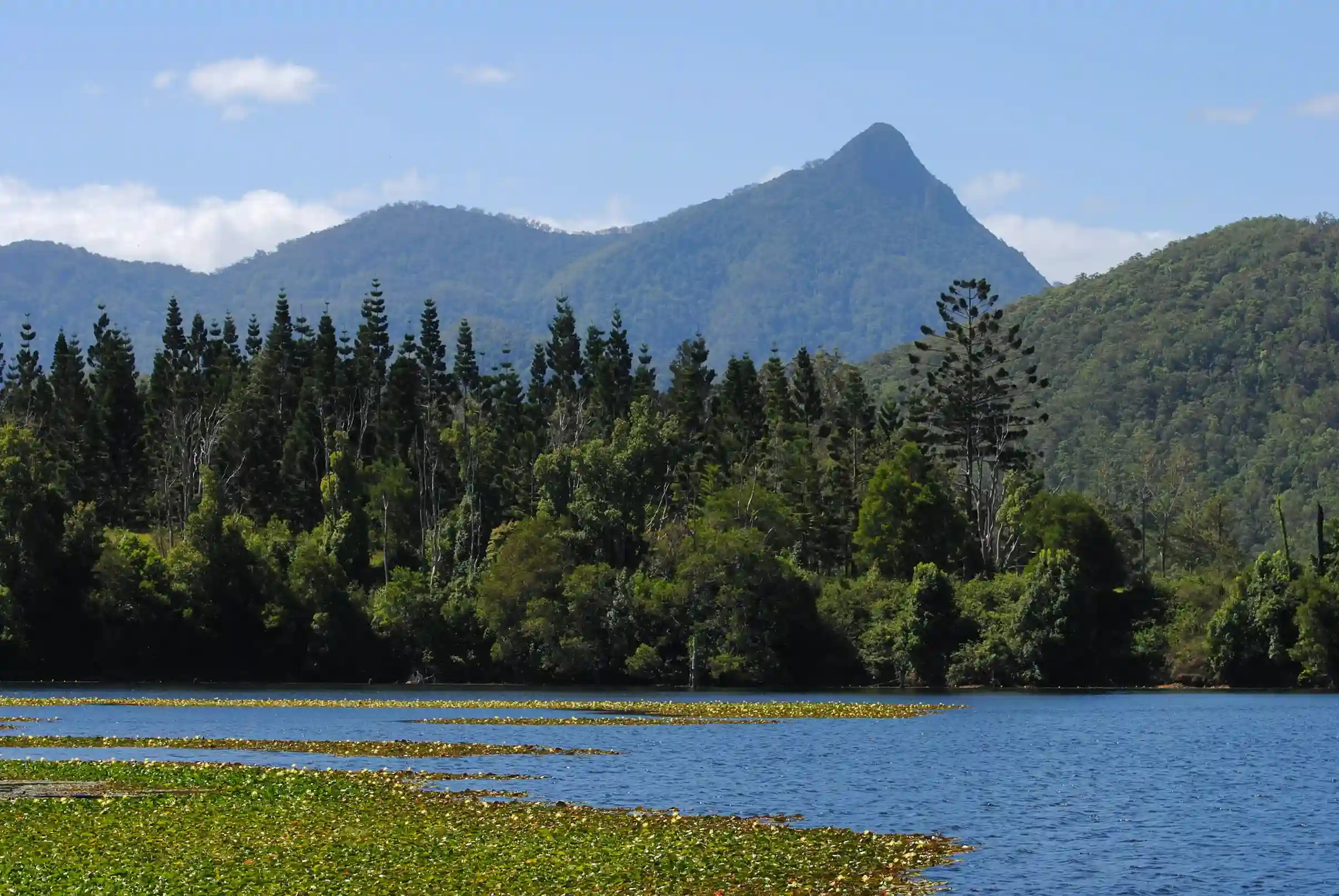Sacred Sites of Australia
Ayers Rock (Uluru)
Uluru, also known as Ayers Rock, is a massive sandstone monolith in the heart of the Australian Outback. It is a sacred site for the Anangu Aboriginal people, the traditional owners of the land. Uluru holds deep spiritual and cultural significance, with numerous Tjukurpa (Dreaming) stories associated with its features. The site attracts visitors from around the world, who come to witness its natural beauty and learn about its cultural importance. Climbing Uluru was once a popular activity, but it is now prohibited out of respect for Anangu traditions.
Black Mountain
Black Mountain, located in Canberra, is a site of significance to the Ngunnawal people, the traditional custodians of the region. The mountain is covered in native bushland and is home to various flora and fauna. While not as widely known as Uluru, it holds cultural importance and is a place where traditional practices and stories are maintained. It's also a prominent natural landmark within the city.
Gosses Bluff Crater, Australia
Gosses Bluff Crater, also known as Tnorala, is an impact crater located in the Northern Territory. It is a sacred site for the Western Arrernte Aboriginal people, who have creation stories associated with its formation. The crater's unique geological features and its cultural significance make it a site of interest for both scientists and Aboriginal people. The site is a reminder of the ancient history of the Australian landscape and the connection between the land and its traditional custodians.
Grampians National Park
Grampians National Park, known as Gariwerd to the Djab Wurrung and Jardwadjali people, is a mountain range in Victoria. It is a site of significant cultural importance, with numerous Aboriginal rock art sites and Dreaming stories associated with the landscape. The park's rugged terrain, waterfalls, and scenic views attract visitors who seek to explore its natural beauty and learn about its Aboriginal heritage.
Kakadu National Park
Kakadu National Park, located in the Northern Territory, is a UNESCO World Heritage site known for its rich Aboriginal cultural heritage and natural beauty. The park is home to numerous Aboriginal rock art sites, some dating back tens of thousands of years. It is a living cultural landscape, where traditional owners continue to practice their customs and maintain their connection to the land. Kakadu's wetlands, waterfalls, and wildlife make it a popular destination for tourists and a vital place for Aboriginal people.
Lake Mungo
Lake Mungo, located in New South Wales, is a dry lakebed that is part of the Willandra Lakes Region, a UNESCO World Heritage site. It is significant for its archaeological discoveries, including the remains of Mungo Man and Mungo Lady, some of the oldest human remains found in Australia. The site is of immense cultural importance to the traditional owners, the Paakantji, Ngarrindjeri, and Mutthi Mutthi people, and provides valuable insights into the ancient history of Aboriginal occupation in Australia.
Mount Wollumbin
Mount Wollumbin, formerly known as Mount Warning, is a mountain in New South Wales that is sacred to the Bundjalung people. It is a place of cultural and spiritual significance, with Dreaming stories associated with its formation. The mountain is considered a place of ceremony and is respected by the traditional owners. Climbing the mountain is discouraged out of respect for Bundjalung traditions.
Wilpena Pound
Wilpena Pound, located in the Flinders Ranges of South Australia, is a natural amphitheatre of mountains. It is a site of cultural significance to the Adnyamathanha people, who have Dreaming stories associated with its formation. The area's rugged landscape and ancient rock formations make it a popular destination for hikers and nature enthusiasts.
Worimi Conservation Lands
The Worimi Conservation Lands, located near Newcastle, New South Wales, are of great cultural and spiritual importance to the Worimi people. This area contains the largest mobile sand dunes in the Southern Hemisphere and is rich in Aboriginal heritage. The lands are home to significant cultural sites, including burial grounds and middens, and are a place where Worimi people continue to practice their traditions and maintain their connection to their ancestral lands.

Martin Gray is a cultural anthropologist, writer and photographer specializing in the study of pilgrimage traditions and sacred sites around the world. During a 40 year period he has visited more than 2000 pilgrimage places in 160 countries. The World Pilgrimage Guide at sacredsites.com is the most comprehensive source of information on this subject.


